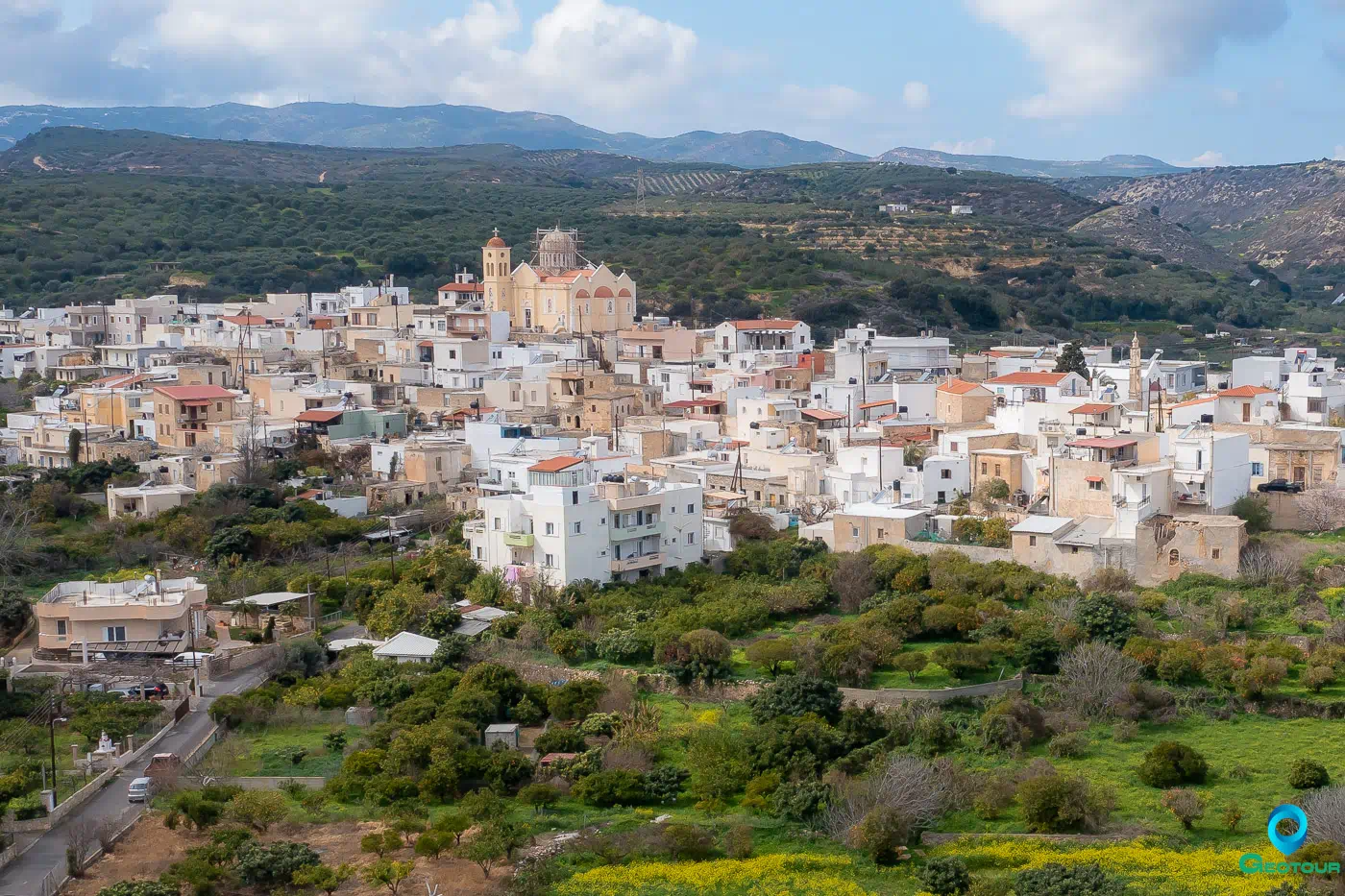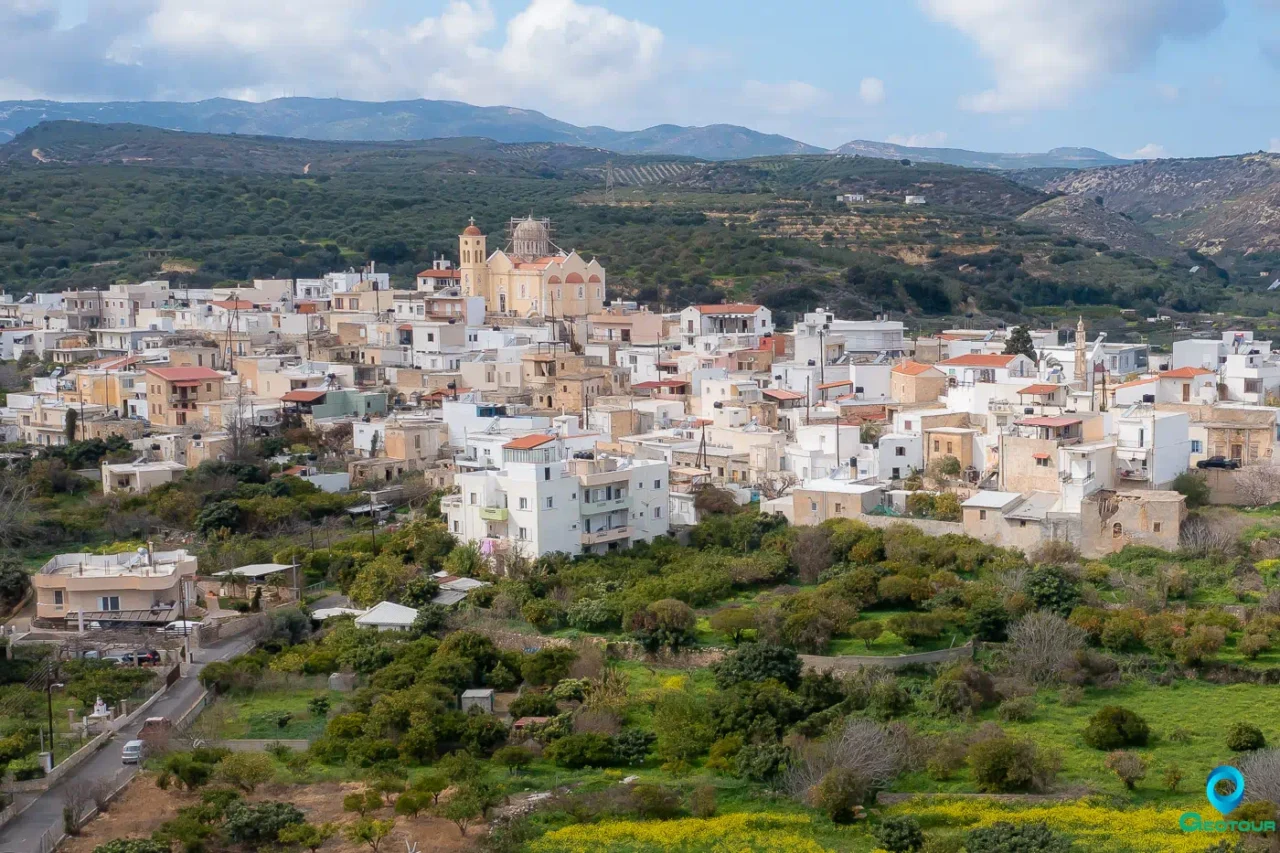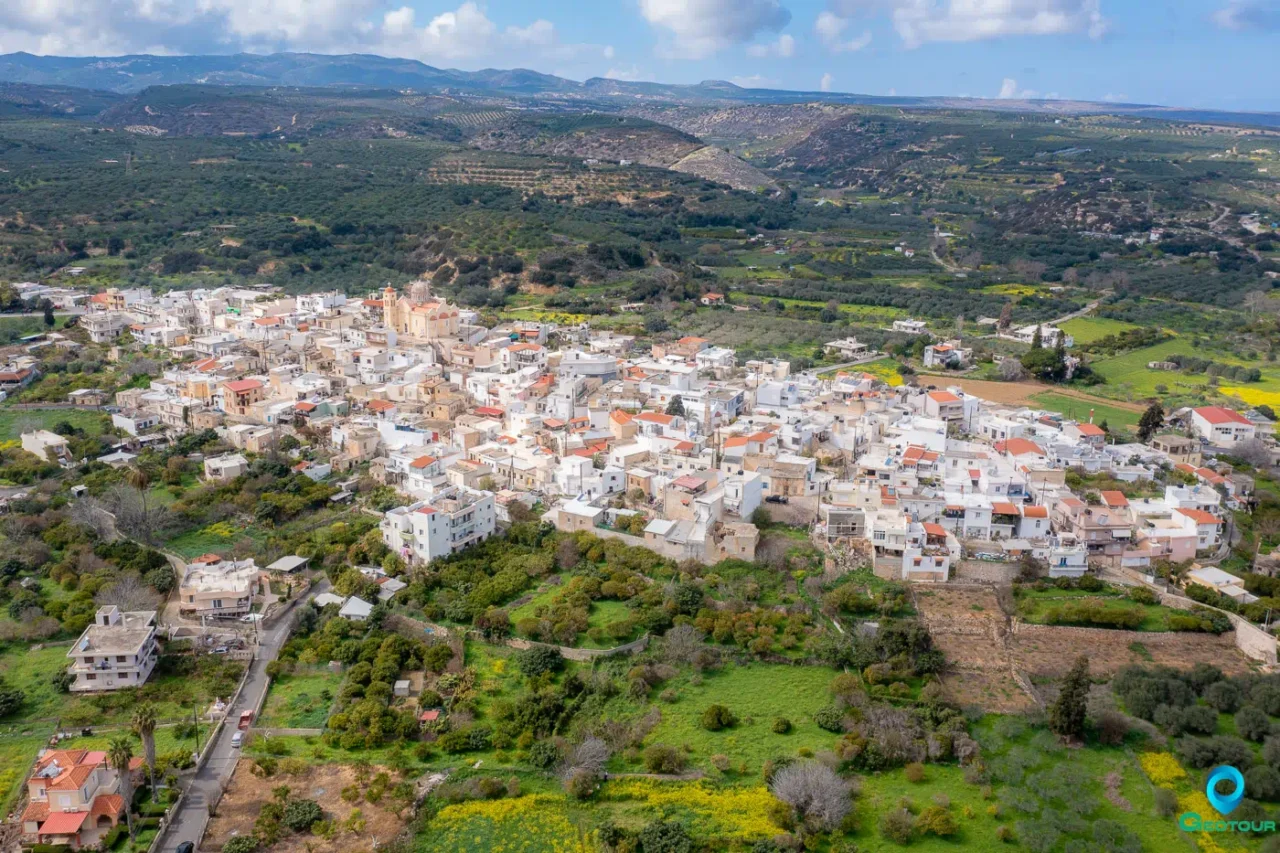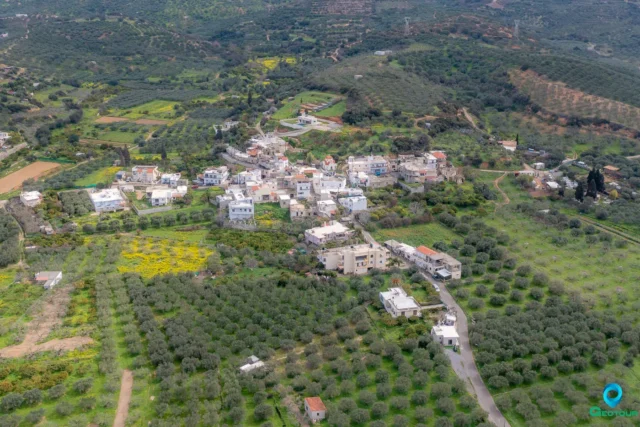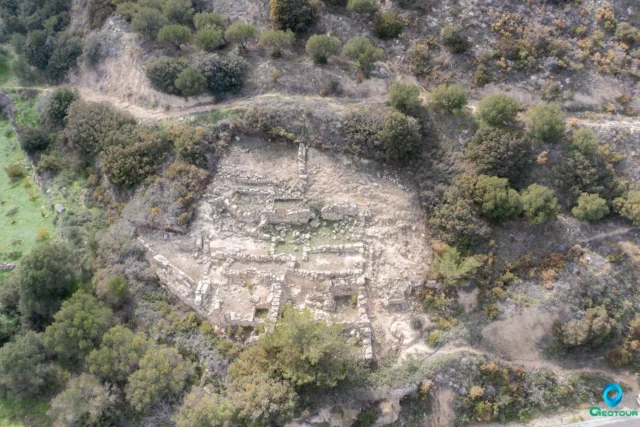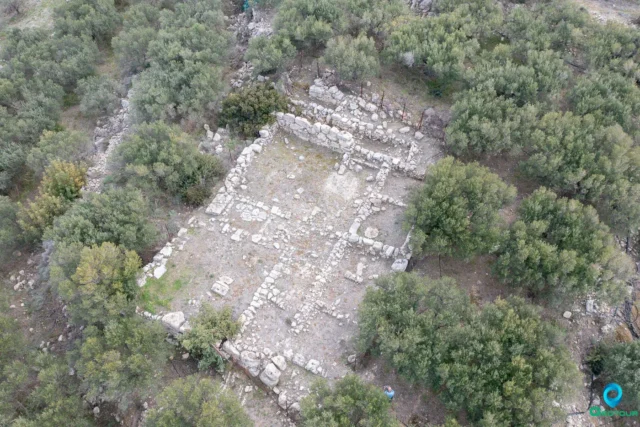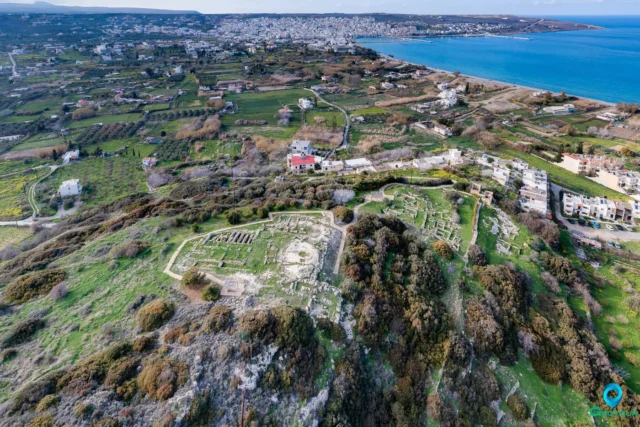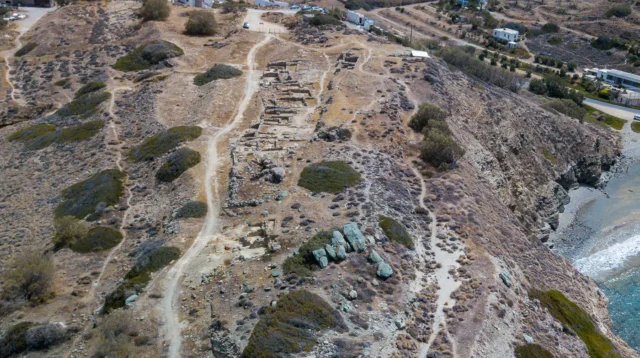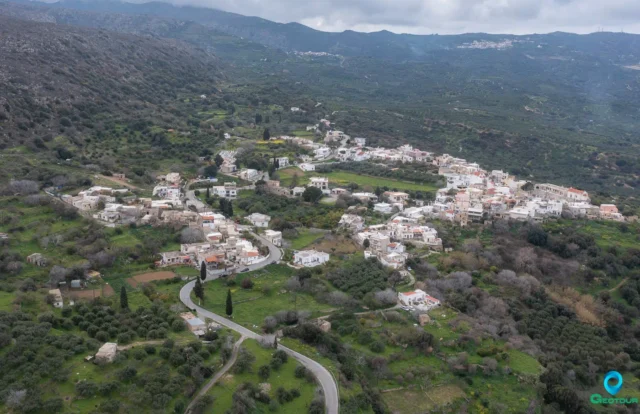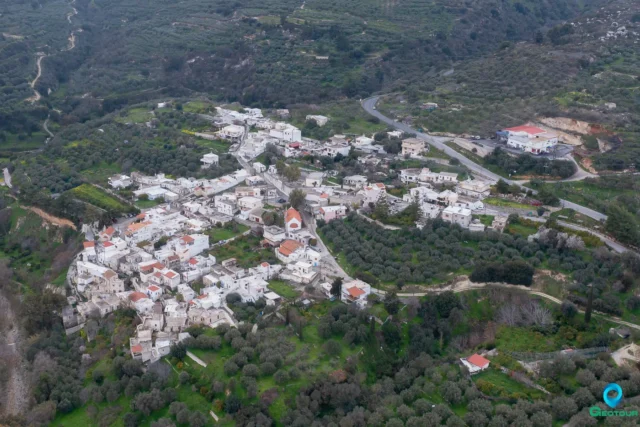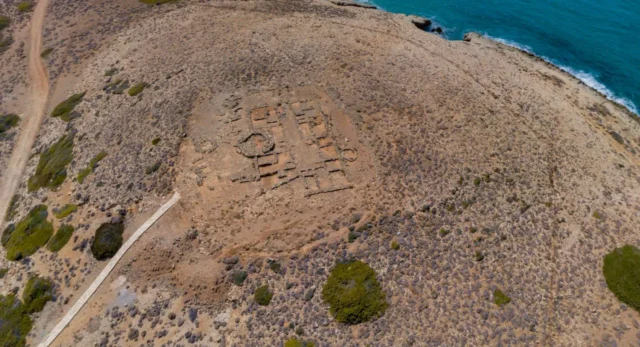Piskokéfalo (officially Piskokéfalon) is one of the largest villages in the Municipality of Siteia in Lasithi, Crete, and the seat of the Piskokéfalo community. It is located on the 3rd kilometer of the road connecting Siteia with Ierapetra.
History
Piskokéfalo belonged to the fiefdom of the Venetian-Cretan Kornaros family, from which the poet of Erotokritos, Vitsentzos Kornaros, comes. The Kornaros family house and watermill have been restored and are intended for the creation of a Vitsentzos Kornaros museum. The family also owned the church of Agios Georgios (Saint George) (inside the village), which bears their coat of arms.
To the north of the village, near the Katrinia hill, a rural temple was excavated with rich findings, such as figurines of pregnant women, vessels, beads, models of people and animals, horned scarabs, clay houses, and others.
On the road between Siteia and Piskokéfalo, a two-story Minoan mansion was excavated, and even today one can see the surviving ruins of rooms, stairs, and protective boulders from the river or the sea.
Until 1871, Piskokéfalo was the seat of the Turkish Administration of the province of Siteia. It is the birthplace of Captain Ioannis Kondos and the deputy of the Cretan Parliament, M. Kolivaakis.
Sights
-
Vitsentzos Kornaros Residence: Located just 200 meters northeast of the village’s central square, it dates back to around 1550 AD. It was recently restored by the Cultural Association of Piskokéfalo with the co-financing of the Regional Operational Program (ROP) of Crete, with the aim of creating a museum dedicated to Vitsentzos Kornaros.
It is a stone-built detached house of Cretan anonymous traditional architecture. The recently restored building consists of a ground floor and an upper floor, with the masonry covered by a lime-cement mortar. The outer double wooden door and the frames are in fair condition, and the inclination of the walls is noticeable. Inside, there is an inner courtyard with a pebble floor, a fountain that looks new, and three doors that lead to three autonomous separate interior spaces.
Passing through the northwest door, you enter a single space where the ceiling consists of cypress wood beams on which the boards of the first floor are placed. To the right is the fireplace and a toilet with modern materials. An unrestored wooden staircase leads to the first floor.
Going up to the first floor, there is a single space with three windows, one north, one east, and one west, and the very pronounced slope of the wooden floor is noticeable. It is now used as a storage space for the needs of the Cultural Association. Starting again from the inner courtyard and passing through the central door, there is a closed elongated space covered by a vaulted stone roof. On the eastern wall, there is a chimney outlet, which indicates the existence of a fireplace. All openings are now walled up.
Going to the courtyard for the last time and passing through the southeast door, you enter a single space with a wooden floor, which is now used as an office space for the Cultural Association.
-
Kornaros Watermill: Going east from the central square of the village, you reach the watermill that was built by and belonged to the Kornaros family. The watermill has been included in the settlement’s regeneration program funded by the ROP of Crete and has been restored.
The western part has a ground elevation difference of 5 meters compared to the eastern part. In the eastern part of the mill is the entrance to the recess where the water entered to end up in the western part and then in a second stone-built building with a height of 3.5 meters, which contained the watermill.
The watermill is no longer in use and is intended to be a museum space, just like the Kornaros house.
-
Trapezonda: A ruined settlement in the Siteia region already from the last period of Venetian rule and the particular homeland of the Kornaros family.
The settlement appears to have been founded in 1414 when the Trapezountians received permission from Venice to relocate to Crete due to Ottoman persecution. It developed into one of the large villages in the Siteia region but suffered great destruction during the sack of the province by Barbarossa in 1538.
In 1648, it was destroyed once again by Chambee Pasha.
In the area of Trapezonda, the church of Panagia (Virgin Mary) is preserved today.
Administrative Information
Piskokéfalo was officially mentioned in 1925 in the Government Gazette 27A – 31/01/1925, where it was designated as the seat of the newly established community of the same name. According to the Kallikratis plan and the Kleisthenes I amendment, together with the settlement of Kato Episkopi, they constitute the Piskokéfalo community, which belongs to the municipal unit of Siteia in the municipality of Siteia. According to the 2011 census, it had 642 residents.
Settlement: Key Points
-
Historical References: Rural temple findings, Minoan mansion, Kornaros family history.
-
Location: 3rd kilometer on the Siteia-Ierapetra road, Lasithi, Crete.
-
Historical Significance: Fiefdom of the Kornaros family, seat of Turkish Administration until 1871.
-
Population Data:
YearPopulationNotes15834421881628476 Christians, 152 Muslim190045419205821928714194090919518561961790197172519816901991702200172320116422021710 -
Current Status: A sizeable village with a community of its own, and a variety of historical and cultural attractions.
References
- Ilias Kolovos, 2010, “The District of Siteia, Crete, in the First Years of Ottoman Rule: Preliminary Remarks Based on Ottoman Fiscal Surveys.”
- Wikipedia

